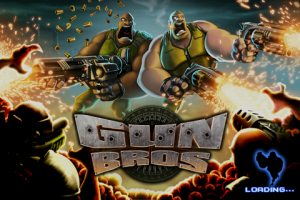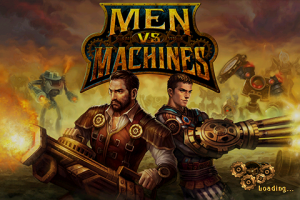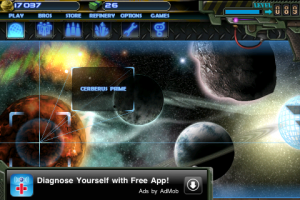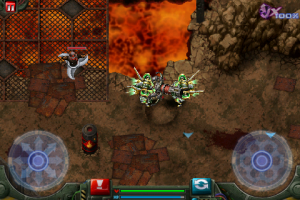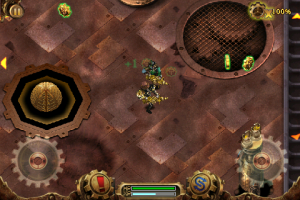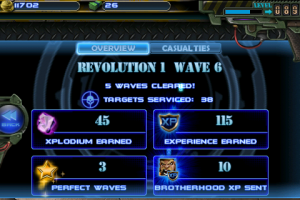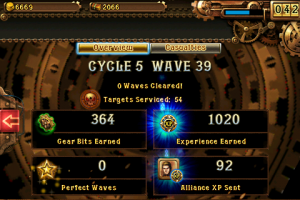Note: The following is a work in progress on remakes and demakes, repetition, and remediation. I post now seeking comments and responses in order to help in the rewrite process.
Abstract: Remakes are a form of repetition well known and increasingly engaged with in cinema and literary studies. Recently remakes have spread to gaming and with them has been a string of games with opposing tendencies. These games have been called demakes. This essay explores the oppositional logics of repetition at play with gaming remakes and demakes in terms of technological, representational and historical modes of knowledge production. Whereas remakes follow the dominant cultural trends and help whitewash the past, demakes are oppositional, playing with technology, the past and nostalgia in a different, if not better, way.
Remakes and Demakes: Logics of Repetition in Gaming
Written: March 21, 2009
Both remaking and demaking have a particular relationship to repetition and time. While their obvious relationship is with the present and the past, they also have a stake in the relationship between present and future. Remaking renews the past; demaking returns to the past. Both are crucially involved with concepts of history, memory and nostalgia. However, these aspects of the remake and the demake seem to be elided in the fetishization of realistic representation, technology and economics. In the following pages I will map out the techno-economic, representation/simulational and historico-nostalgic logics involved with the current repetition of gaming texts.
One relatively recent gamic remake is Tomb Raider: Anniversary. Produced by Eidos, the same company that released Tomb Raider in 1996, the remake marks the 10-year anniversary of the original game that began both the genre and property that has now spread to multiple media (game, film, novelization, et cetera) over the past decade.
Tomb Raider is a 3rd person action adventure game. The player controls the now famous character Lara Croft as she explores various environments (Peru, Greece, Egypt and Atlantis) searching for the keys to unlock and eventually explore the lost city of Atlantis. The Anniversary remake uses the same 3rd person genre, narrative and particular locales as the original. The graphics are updated from clunky, early polygonal representation to high-count polygon graphics that produce a more “naturalistic†or “realistic†representation. [1] The remake could be considered a “faithful†translation of the original as it reproduces the flow and specific scenes/levels of the original, but it works to erase the dated aspect: the graphics. [2] By this logic the important, reproduced aspects are the play style and the property itself.
The Anniversary remake, as a highly commercial endeavor, reproduces the “good†elements of the original for simple economic reasons. It brings back what the audience has paid for time and again with extras. The generic mode of 3rd person 3D action/adventure genre, itself an update to 2D platformers such as Super Mario Bros., was popularized in the original Tomb Raider. It has been revived as a genre in each Tomb Raider sequel, and the Anniversary remake flogs the tired generic horse enough to make a (significant) profit. The economic logics of “better-faster-more†are of central importance to the remake. Perhaps the only remakes that do not follow the threefold increase are those that attempt to take the game as is visually and transfer the game from a previous, now increasingly difficult to obtain, or simply obsolete, platform to a modern one. Examples of this are the Square-Enix Final Fantasy games that are being remade from the 1990s Super Nintendo hardware to the 2000s Gameboy Advance and Nintendo DS hardware. In these remakes additional elements (“moreâ€) are added, but the other two aspects remain as they were in the original (faithfully reproduced graphics and speed).
The remake is thus involved in a process of renewal where “old†is turned into “new†in a strictly linear fashion that posits less < more, slow < fast, abstract < naturalistic, and so forth. This techno-economic logic of “better-faster-more†dominates gaming on the top commercial layer, but it is directly opposed within the discourse surrounding the demake.
Demaking is a recent phenomenon where a game is translated in the opposite direction compared to the standard remaking. The term “de-make†was coined by Phil Fish on the TIGForums in August of 2007. In response to recent remakes, Fish writes:
what about the opposite? relatively new 3d games being remade for lesser platforms. like that guy who ported ocarina of time to SNES, or turning doom into a cellphone RPG… i fint [sic] it highly interesting to see what happens when that happens. see how far you can push a game backwards, and see what gameplay elements remain intact. what got cut, what got added? does it play better? can anybody think of other downgrades/de-makes? can anybody think of a better name for those games? (Fish 2007).
Instead of taking an old game and making it new the demake takes a new game and makes it old either through genre or graphics. Fish uses the term “downgrade†in opposition to the normative “upgrade†assumed with the remake’s advancement along the previous mentioned techno-economic logic of “better-faster-more,†and then asks if anybody can think of another name: a year and a half later the hyphen has been removed and numerous other demakes have been made both independently by interested parties and within The Independent Gaming Source’s Bootleg Demakes Competition.
The demake that I will primarily be considering here, D+Pad Hero, was created by Kent Hansen and Andreas Pederson and is a demake of Guitar Hero a popular music simulation game. Guitar Hero is one of many music simulation games (others include Rock Band, SingStar, GuitarFreaks and DrumMania) where the user “plays†an instrument (drumset, guitar) or sings in rhythm to music and beats displayed on the screen. With Guitar Hero the guitar is unplayable as a guitar and simply consists of five input buttons and a “strum†bar that the player uses in order to “play†the song. The player must press the buttons and use the strum bar in accordance with the cues on the screen, which are in tune/rhythm with the song being played, and a score is given at the end of the song based on accuracy. This logic has been in older games such as BeatMania (1997), Pop’n Music (1998) and Dance, Dance Revolution (1998), but has increasingly been combined with simulated musical production and commercial music. While Pop’n Music forced the player to press five large, colored buttons arranged on an arcade frame in accordance to the cues and a son, the later games put the buttons on a faux instrument. The original Guitar Hero and the other music simulation games have had dozens of expansions and sequels. is in its third release and the other games are around a similar sequel number. The sequels follow a similar techno-economic logic as the remake in that they have more realistic controllers (‘guitars’ where you strum while holding the proper buttons down) and more popular music (Beatles, Metallica, et cetera); the expansions simply have more songs.
D+Pad Hero takes the basic rhythm game formula and reproduces it with 8bit graphics and 8bit music for the Nintendo Entertainment System, a system first released in 1983. [3] The player uses the archetypal NES controller instead of the faux-guitar in order to input the arrow keys and the A and B buttons in tune to the music. The concept of accuracy and score remain the same. Other than simply reproducing the game visually on the NES system, the songs themselves have been rendered compatible with the hardware. The authors took various popular songs and converted/translated them to 8bit midi music. [4]Â The techno-economic logic of the sequel and remake is reversed on both sides: the game has old graphics, old music and old hardware, which reverses the technological logic; the game is unsellable due to copyright and instead exists as an economic product solely through donations. The demake is thus a work of love, fun or fan/nerd culture.
The second logic is of representation/simulation. The idea of naturalistic graphics or perceptual realism is related to the concept of “better-faster-more†within the techno-economic logic, but it extends beyond the simple technological fetish for photorealistic graphics. Both the remake and the demake are crucially related to re-presentation and the link (or lack thereof) between production and reproduction, image and meaning, and/or original and derivative. The conflict between true meaning, lack of meaning and drawn meaning are in conflict within the original, remake and demake. One line of thinking extends from the Marxist desire to raise the veil of ideology and thereby reveal truth through Althusser and the inability to ever escape ideology to Baudrillard, the hyperreal, simulation and an inability to every return to any ultimate truth. True meaning ends within the concept of simulation, but the path can also be linked with a separate path that goes through semiotics and Barthes’ differentiation of the work and the text, Foucault’s destabilization of the author, and Manovich’s concept of transcoding from a base. These two lines then culminate in Jenkins and the postmodern celebration of fan culture and the user’s ability to make his or her own meaning. Meaningless pluralism is reached through this path. [5]
A third logic at play in the remake is Historico-Nostalgic. The past, as unusable due to technical incompatibilities (systemic difference in coding and hardware), is bracketed off, and, depending on your outlook, either erased or put into the past. The few choice bits are taken out of this graveyard of the past and become “history.†While Doom is remade time and again, Pathways into Darkness (a contemporaneous 1st person shooter) is written out of the revived history: it remains in the past, but Doom is remade as Doom III and taken out of the past to be redeployed in the present as historical.
The third logic within the remake is one of history and memory. However, the nostalgia is slightly different between the remake and demake. Key to understanding the difference between the two forms of repetition is Svetlana Boym’s conceptualization of restorative and reflective nostalgic tendencies. While restorative nostalgia attempts to fill in the holes of the past to produce a utopian present, reflective nostalgia dwells in the signs of the past itself. This difference is key to understanding the difference between the remake and demake; it is crucial to finding some sort of useful meaning beyond the reductive celebration of postmodern repetition and pluralism.
Techno-Economic Logic
The initial logic within the remake is one of technology and economics. The remake is made in a particular way because it sells and the particular way in which it is made reproduces the dominant trend of technological advancement. [6] Since the 1950s computers have grown exponentially more powerful. The course has generally followed Moore’s law, which posits that the speed of a processor doubles roughly every two years. While historically the technology indeed followed this logic in that things double in speed every two years, whether this is a natural development or a self-developing prophecy due to the industry’s desire to maintain the trend is unknowable. Similarly problematic is the chicken and egg effect of the hardware being forced into obsolescence due to Moore’s Law and the public’s desire for faster computers. However, the result is that computers either needed to, or simply could run more complex applications.
The general increase in computer speed needs to be understood in the computer’s ability to process minute tasks faster, which translates equally into producing more tasks in the same amount of time, which can be further translated into the simple idea of complexity of tasks and possibilities. The computer then went from being able to calculate very simple algorithms to running through detailed, complex algorithms. One way to understand this logic is through gaming capabilities. Within the initial era of gaming there were text adventures like Zork, where input was limited and graphics were non-existent, and games like Pong, which had highly pixilated graphics and simple logic. There were limiting factors on both the storage and retrieval sides of computer applications. Limited memory to store data and limited processor power to retrieve and use the information. As both increased the programs could become more complex, and it is this complexity that can be translated into more detailed graphics and games. A rather jagged progression of gaming consoles is Nintendo (1983) -> Super Nintendo (1990) -> /Playstation (1994) -> Playstation 2 (2000) -> Playstation 3 (2006); such a progression can be understood slightly better knowing that each progression has a more powerful processor (8bit, 16bit, 64bit, 128bit et cetera) and increased storage (ROM cartridges, memory cards, CDs, DVDs and BluRay disks). [7] The 8bit graphics of the Nintendo were pixel dominated, had limited color and music. The Super Nintendo allowed far more detailed graphics due to the increase in processor speed, and the music and sound changed from very limited beeps and boops to a vast supply of beeps and boops. With the Playstation graphics progressed beyond combinations of pixels into polygons and the production of 3D representations instead of flat, pixilated scenarios. Playstation 2 and 3 utilized CD quality sound due to the movement to the DVD and BluRay disk with greatly expanded storage, and increased the number of polygons involved in any graphical representation scenario so that a tube legged, square shoed, triangle breasted, ovoid headed polygonal Lara Croft eventually turned into the far more “naturalistic†if not realistic character of the Anniversary remake. [8] The graphics of the Anniversary remake are far from photo-realistic, but they are certainly an upgrade brought about by a decade of increased technological development.
The increase in calculation power has brought with it the possibilities of an increase in realistic representation. Whether by chance or naturally there has been a parallel development between realistic representation and processor speed as games that have increased their naturalistic representation as the processing power has increased have also sold better. This logic is best seen in the dominance of first person shooter (FPS) games such as Doom as compared to visual adventure games such as Myst (Hutchison 2008). One aspect of the techno-economic logic within the remake follows this assumed parallel between realisticness and economic well-being. Making a remake with better graphics will make it sell even better than the original game.
A second aspect of the techno-economic logic within the remake involves the price to produce a game. Remaking something that has already existed invariably involves less than making something new as long as all other aspects of the production remain the same. This is the same reasoning behind Hollywood’s remaking industry: it is cheaper to remake an old movie than it is to make a new script, figure out how to enact that script and then hoping in the end that the ideas behind the new script were not poor in the first place (Forrest and Koos 2002). The remake attempts to take out that uncertainty by simply remaking a well-worn, sure-shot idea/script. While it is often problematic to map a concept developed for a particular medium onto another medium the logic should hold here. The costs of remaking an older game are cheaper than making a new game from scratch as long as at least some aspects of the storyboards, narrative, character ideas or even code itself are reused. Only certain (popular) games are chosen for remaking, and both the following of technological evolution and low(er) production cost ensure that they will be better economic success than otherwise. [9]
While the remake follows the linear techno-economic logic, the demake exhibits an opposing logic that breaks with both the technological and economic expectations. Unlike the parallel logic of upgrading the computing power and realisticness, the demake’s “downgrade†simulates a previous level of computing power. This forces the creator of the demake to creatively reproduce tropes of the present in alternate ways; as Fish writes, coding a demake involves “see[ing] how far you can push a game backwards, and see[ing] what gameplay elements remain intact.†In the case of D+Pad Hero, the demake fundamentally questions the benefits of the increased graphics as every element of the actual game is reproduced within the demake on a different level of perceptual representation. Gang Garrison 2, a demake of the popular Team Fortress 2, follows a similar logic by taking away the advanced graphics, but maintaining the cooperative team play. This is somewhat different when the demake actually changes the genre. An example of where the demake forces a shift due to lack of processing speed is when Portal, a FPS game, was demade first as an Internet browser game and then as an Atari 2600 game. The generic formula both demakes enacted was of a 2D puzzle game, which, unlike the first person shooter genre, is something reproducible in the current generation of web browsers and on a twenty year old console. This alteration questioned the currently naturalized economic dominance of the FPS game.
The second aspect of the techno-economic logic is also problematized within the demake as all demakes are fan produced programs that are not designed to be (and in fact cannot be) sold. As the Independent Gaming Source proudly proclaims, the competition is of bootleg demakes. Thus, the increase in monetary gain that might come from repetition followed by sale is in fact stymied because the sale cannot happen. Because the demake breaks with the techno-economic logic there must be some sort of logic that drives people to produce such programs. One answer is the old hacker love of taking something apart, figuring it out and putting it together again differently/better (Galloway 2004). A second answer is that such subcultural proclamations do not prevent cooptation. By riding the popularity of a current game, demake programmers might obtain enough popular support to get a break into the official industry. Bootleg subcultural pride often ends with selling out. A third reasoning, the logic that I believe the demake follows, and something I will return to later is of memory, nostalgia and pleasure. For now I will expound on the logic of representation, which connects most with the techno-economic logic of the remake, even if it does not quite meld well with the demake.
Representation/Simulational Logic
The techno-economic logic that flows in a single direction in the remake and is disrupted into unlinked stops and starts in the demake is paralleled by the second logic of representation and simulation. Representation is to re-present something from a different time/space, to bring something from a previous time/space into the here and now.
Roland Barthes writes that “the photograph profess[es] to be a mechanical analogue of reality, its first-order message in some sort completely fills its substance and leaves no place for the development of a second order message†(Barthes 1977, 18). As representation it claims perfect correspondence, but Barthes points to the different orders of meaning within the image that necessarily block any type of objective analogousness. The image has three levels of meaning: the linguistic message that relays a particular meaning, the non-coded iconic, denoted message that attempts to claim correspondence and objective innocence, and the many coded iconic, connotative meanings that disrupt any possibility of perfect representation (Barthes 1977). Thus, representation claims to simply represent what was with a clear, singular meaning, but in fact has numerous meanings and in fact never brings back the entirety of what was. Re-presentation is never one-to-one repetition even though it claims to be.
DN Rodowick notes representation is often “defined as spatial correspondence†(Rodowick 2007, 102), but I would add that the concept of temporal correspondence (present, presence) is just as important, if slightly more obviously impossible to achieve. Rodowick himself protests the image’s (analog and digital) link to both representation and perceptual realism claiming that photography does not provide spatial semblance, but in fact corresponds to “our perceptual and cognitive norms for apprehending a represented space†(Rodowick 2007, 103). Thus, that which is re-presented is not a physical reality, but a mental and psychological one obtained through perception (Rodowick 2007, 105). Obviously, this argument holds that representation is not reality, but that does not answer what it is, nor does it answer why it is both produced and consumed. One way of getting at the questions of ‘what’ and ‘why’ is primarily through Marxist analysis, and the other is through psychoanalysis, but both include a dosage of semiotics.
Following Marx’s conceptualization of the proletariat’s existence within the capitalist mode of production as false consciousness, the Frankfurt school theorists extend from the economic base to also include superstructural false consciousness. Horkheimer and Adorno write, “Capitalist production so confines [the workers and employees, the farmers and the lower class], body and soul, that they fall helpless victims to what is offered them… the deceived masses are today captivated by the myth of success even more than the successful are†(Horkheimer and Adorno 1972, 133-4). The captivating myth in question is the culture industry’s representation of everyday life.
The whole world is made to pass through the filter of the culture industry. The old experience of the movie-goer, who sees the world outside as an extension of the film he has just left (because the latter is intent upon reproducing the world of everyday perceptions), is now the producer’s guideline. The more intensely and flawlessly his techniques duplicate empirical objects, the easier it is today for the illusion to prevail that the outside world is the straightforward continuation of that presented on the screen. (Horkheimer and Adorno 1972, 126)
The process they describe is one where the culture industries create a representational system where the world of leisure and entertainment is inseparable from the real world, which results in the molding of people into unquestioning consumer citizens who believe the represented world is just out of their grasp, but still obtainable. For Horkheimer and Adorno the culture industry and the progression of representational technologies leads to increased mass deception against which it is the duty of critical theory to oppose, and it is the duty of Marxists theorists to denaturalize. The intent is, like with Marx, to raise the veil and thereby enable the teleological dialectic of progress to lead toward some (better) existence. While (justifiably) doom and gloom, the Frankfurt school hopes to open peoples’ eyes to the ideological brain washing of the culture industry’s representational system.
Henri Lefebvre follows a similar Marxist methodology in his critiques of everyday life. Lefebvre argues that the abstract capitalist conceptualization has worked on and produced the lived, concrete space of life and experience. This is a similar Marxist idea of production even if he has moved beyond the early Marxist declarations of false consciousness and mass deception. We are not being tricked, but we are living in a constructed world/consciousness that he believes needs to be protested. Thus in his multi volume Critique of Everyday Life he proposes that everyday life is fleeting and sought after: utopian (Lefebvre 1991). Unlike de Certeau’s practical tactics of dealing with everyday life as it is, Lefebvre is unsatisfied with the Situationist practicality and wants to point toward the utopian variation of everyday life, the variation that is just out of reach. Thus in his late work he proposes a new science of studying the rhythms of life. By looking at the rhythms we can see the disjunctions and recognize both the (Capitalist) system and the parts that are out of the system (Lefebvre 2004). For Lefebvre representation is not the real, but there remains the possibility of an out, a denaturalization of the constructed space of Capitalism. Althusser’s work on ideology is one of the first steps of the removal of an out (even if it leaves the possibility of understanding).
Writing at approximately the same time and intertwined with Lefebvre, Louis Althusser’s work is on ideology as an always-already constituted element where there ceases to be access to some untouched origin: the veil might be raised, but nothing but another veil will be seen; you might be outside of an ideology, but never ideology (Althusser 1986). Althusser’s work seeks to answer the question of just why the proletariat revolution never happened by bringing out Gramscian notions of hegemony and formulating a dual imposition of Repressive State Apparatuses and Ideological State Apparatuses. While ultimately side-stepping the ire of the orthodox Marxists by giving more importance to RSAs and the economic base in the last instance, Althusser’s analysis in fact identifies the superstructural process of interpellation through which the person is made one with the society so that he or she does not in fact want to rebel. He argues that turning around to a police officer’s hailing shows a person’s interpellation within an ideological system; another example would be identifying (or seeking to identify with) an advertisement. Even if one rejects the hailing of one particular ideology one cannot escape: such a rejection indicates a separate subjective ideology, but not the existence of being outside ideology, and even then one can still intersubjectively imagine a subject that would be interpellated and thereby still be within the system. The second part of Althusser’s theory holds that because one’s identity is formed within an all-inclusive ideology one can never get back to some untouched, uninfluenced origin. We are always-already within ideology and we are always-already constituted as particular subjects. Because of the formulation of always-already there is in fact no false-consciousness from which we can escape, as it is all we have and all we can ever have.
Althusser’s crucial break from the hopes of denaturalization was enabled in part by Jacques Lacan’s psychoanalytic work on reality, language and the three orders: imaginary, symbolic and real. The real is impossible to interact with/see/witness as it resides outside of language; any attempts to get back to a real (through representation) are necessarily fractured through the very structure of language. Language then is part of the symbolic order as it structures and stands between the real and the imaginary (experienced) world. Finally, Lacan’s third order, the imaginary, is the world that we inhabit, our subjective experiences. Althusser’s always-already corresponds to Lacan’s imaginary: it is the represented world. Thus, the problem posed by Althusser is not of getting back to the origin, but understanding and problematizing the (grammatical and material) means and conditions of production of desire, the imaginary, ideological world. He has taken away the Marxist out (the veil), but he has left the possibility of understanding the world.
The connection between Lacan, Lefebvre and Althusser ends up with Jean Baudrillard who, in his later work, radically broke with his Marxist background informed by Lefebvre and the possibility of an out by claiming, like Althusser and Lacan, that there is no recourse to the real. Baudrillard claims:
abstraction is no longer that of the map, the double, the mirror, or the concept. Simulation is no longer that of a territory, a referential being, or a substance. It is the generation by models of a real without origin or reality: a hyperreal. The territory no longer precedes the map, nor does it survive it. It is nevertheless the map that precedes the territory – precession of simulacra – that engenders the territory. (Baudrillard 1994, 1).
Taking a step beyond Lefebvre, Baudrillard takes the possibility of return, of an out from a life in a produced world, away. The territory does not survive the map because the hyperreal/simulation “threatens the difference between ‘true’ and ‘false,’ ‘real’ and the ‘imaginary’ (Baudrillard 1994, 3). Baudrillard identifies a very particular moment when wars were being enacted in front of cameras, re-presented to the world, and being reacted to as ‘real’ events: his argument thus states that there is no difference between real and fake events. [10] The representation “has no relation to any reality whatsoever: it is its own pure simulacrum†(Baudrillard 1994, 6), which leads to deterrence and simply dealing with the hyperreal as the only reality around. Baudrillard takes Lacan’s imaginary order and runs with it as the only reality to which we have access. While Baudrillard was far from celebratory of the hyperreal world, a few years later Zizek tells us to love our symptom. We have no recourse to the real to denaturalize, so we might as well do the best we can. Unfortunately, this logic combines in an uncomfortable way with the destabilization of meaning within postmodern semiotic theory.
Linked in some ways to his work on meaning in photography, Barthes’ differentiation between a work and a text is important as it points to the point of meaning making and what it means for the text itself (Barthes 2007). The work is singular, has a proper meaning that “closes upon a signified,†has “filiations†to field and author, and is ultimately an “object of consumption.†In contrast, the text “is experienced only as an activity in production,†resists classification as a “paradoxical†thing, is “radically symbolic,†plural and understood within a network and not linked to a father/author. Michel Foucault further questions the text’s link to an authorial function and claims that it is imperative to reverse the author function in order to change the discourse of research from subject based to discourse based knowledge (Foucault 2003, 390-1). Opposed to the modern work, the text is ultimately a postmodern, intertextual production. Both of these claims are important, but become problematic when eventually linked up to the remake.
Lev Manovich does not explicitly bring up the concept of a work or text in his discussion of new media, but his five aspects of new media resemble Barthes’ tropes of a text. Manovich claims that there are five relevant principles within new media: numerical representation (digitization), modularity (workable chunks of data), automation (high and low forms of computer automation), variability (which is linked to modularity and postfordism as well as translation through the concept of the “base objectâ€), and transcoding/programmability. The principles obviously move from old to new media in the same way that Barthes moves from work to text, but the ideas of variability and transcoding hold further interest. Manovich’s concept of variability implies a sort of base object that can be altered into varied new forms. However, unlike translation where there is an original and a translation, a first and a second, the singular base object exists as an incomplete entity and therefore does not actually exist in a power relationship to the varied finished objects. Similarly, “to ‘transcode’ something is to translate it into another format†(Manovich 2001, 47). Manovich’s language of new media renders horizontal the last shred of authorial/original meaning and continues with Barthes and Foucault’s intertextualization of the text so that by the time we get to the original, remake and demake they are all simply transcodings of some other base object of simulation.
It is at this point that I can relate the Representational Logic to the remake and demake. The remake follows the simulational logic that stems from Baudrillard’s discussion of hypersimulation (Baudrillard 1994, 19-20). The remake seeks greater perceptual realism so that one cannot tell the difference between a game and life and in fact doesn’t matter. The simulated bank robbery becomes/is a real bank robbery; the person pushing the button to drop the bomb is the same whether he or she knows or not. In contrast, the demake D+Pad Hero problematizes the simulational logic by moving from the simulated experience of playing a (fake) guitar to simply inputting the buttons on a controller. There is no difference within the coded level of the game itself, but the personal experience is completely different. The progression of music simulation games has increasingly tried to reproduce the experience of playing an instrument. While the movement of buttons to a fake guitar is still far from “real,†the movement of buttons to fake drums is slightly less problematic as the action of drumming is within the fake drumming. In contrast, D+Pad Hero removes the instrument and brings back the four direction game pad from deep in the gamer’s memory. Similarly, the return to 8bit music from an era of CD quality reproduction in the original Guitar Hero disrupts the standard representational experience by forcing the player to return recognize that he or she is gaming and not actually playing music with an instrument.
If we follow Baudrillard’s simulation and the lack of recourse to any real and any meaning we are abandoned in our attempt to differentiate between an original, a remake and a demake. As all three are transcodings there is no real difference at the level of simulation: game pad or instrument, photo-realism or 8bit it’s all hyperreal, postmodern pastiche and pluralism all the way down. This is the logic that Constantine Verevis follows in his analysis of cinematic remakes in the postmodern era. By understanding remakes as intertextuality he leads directly toward the removal of difference through an understanding of the remake as New Hollywood citationality. However, by doing so he limits the possibility of seeing the neutralization of the foreign elements and harsh economic realities of remaking precisely because it emphasizes laissez-faire economics and global cinematic modernity (Verevis 2006). Such details are important in the unequal, disjuncture filled world that we make sense of through personal experience. Like Viviane Sobchack’s critique of Baudrillard that resorted to a phenomenological experience of one person having lost a leg and remembering/knowing the difference, the place I seek to reclaim meaning and differentiate between the remake and demake is in history and the personal experiences of memory and nostalgia.
Historico-Nostalgic Logic
The third logic related to the remake and the demake is what I am calling historico-nostalgic. This logic is about the relations of the game and player to the past and to the future. In order to tease out the relationships between remake, demake, player and meaning I will explore ideas of time, history and nostalgia. On nostalgia, Svetlana Boym writes that: At first glance, nostalgia is a longing for place, but actually it is a yearning for a different time – the time of our childhood, the slower rhythms of our dreams. In a broader sense, nostalgia is rebellion against the modern idea of time, the time of history and progress. The nostalgic desires to obliterate history and turn it into private or collective mythology, to revisit time like space, refusing to surrender to the irreversibility of time that plagues the human condition (Boym 2001, XV). Similar to Boym’s obliteration of history, Reinhart Koselleck writes of the constant need to rewrite history so that it aligns with the concept of the modern present (Koselleck 1985, 250). History is never simply dates in the past, one after another, but a specifically aligned genealogy that culminates in the present and leads to the future. It is this politics of alignment between past, present and future that can be seen in the crisis of memory of which the cinematic remakes of end of the 20th century are a part, as are the gaming remakes and demakes of the beginning of the 21st century. [11]
Especially since the late 20th century there has been a crisis of memory. While some theorists write of the entanglement of memory and history in the production of national or cultural identity (Sturken 1997), others have written specifically of the rise of nostalgic, retro styles such as black and white film in the 1990s (Grainge 2002), or the nostalgic consumption of mid 20th century film and television classics in the home (Klinger 2006). All of these engagements with memory and the past are slightly different: while some focus on cultural/national memory and the construction of cultural/national identity, others focus on personal forms of nostalgia and the individual’s own interaction with his or her past. My contention is that the difference between remakes and demakes lies on the line between memory and history, and to conflate the two forms of repetition leads toward the representational logic, but away from any ability to make useful meaning out of the texts: while they might be tangled, they are not the same thing.
Boym writes of two tendencies of nostalgia that help differentiate between the two types of gaming repetition. She explores the concept of nostalgia related to place and time in her native Russia. Having left for what she thought was for good, Boym returns after the fall of the USSR and explores both her and the national interaction with nostalgia. Her framework establishes two general tendencies of nostalgia, restorative and reflective. “Restorative nostalgia puts emphasis on nostos and proposes to rebuild the lost home and patch up the memory gaps. Reflective nostalgia dwells in algia, in longing and loss, the imperfect process of remembrance†(Boym 2001, 41). The two tendencies do not map perfectly onto any single example as they exist in relative amounts, but it is possible to use them to talk about the remake and demake.
The restorative tendency aims toward a unified truth generally understood as the national project. It “manifests itself in total reconstructions of monuments of the past†(Boym 2001, 41). Restorative nostalgia can be seen in the active use of the past to form a particular history. As said before, Tomb Raider: Anniversary reconstructs the entirety of Tomb Raider and what it leaves out is in fact excised from history: the reconstruction becomes history, not the past/original itself. As Constantin Fasolt writes against the historians’ rule against mixing the past as immutable and present as occurring:
History is constitutive of modern politics, constitutive of the kind of modern state that claims sovereignty for itself and the autonomy of individuals subject to nothing except their conscience and the laws of the physical universe. The prohibition on anachronism? It merely seems to be a principle of method by which historians secure the adequacy of their interpretation. In truth the prohibition on anachronism defines the purpose for which the discipline of history exists: to divide the reality of time into past and present. History enlists the desire for knowledge about the past to meet a deeper need: the need for power and independence, the deed to have done with the past and to be rid of things that cannot be forgotten. (Fasolt 2004, 13)
Similarly, the remake has unifying, restorative elements within it. Through remaking an old game the producer and industry create a specific history that highlights very specific aspects. Certain games (Doom and Tomb Raider) or genres (FPS and 3rd person action/adventure) are identified as important and a unified gaming history is created that further mirrors the techno-economic logic that both supports and is supported by the Capitalist mode of production. If, as Thomas Kuhn states, “history…disguises the nature of the work that produced it†(quoted in Fasolt 2004, 39), then the remake disguises the nature and meaning of its reproduction. Instead of questioning the logic that revels in increased realisticness instead of realism, the remake highlights the logic of realisticness and simulation, and justifies itself through the basic concept of economics.
In contrast, the reflective tendency can be seen in the demake, which dwells in the ruins, patina and dreams of the old genres, sights, sounds and experiences that the creators of the demakes themselves witnessed, remember(ed) and attempt to reflect on. The demake drive shuns any form of linear progress by flipping back and forth between the present and past modes and in fact brings the singular primacy of natural progression into question. Unlike the justification of certain games and genres the demake highlights those genres that have been abandoned in the past (text adventure, side-scroller and 8bit sound) and those games that have been ignored due to their lack of economic appeal (artistic, serious and cult-classic games such as Portal and Shadow of the Colossus). While there is the very possibility of such reflective nostalgia to be co-opted back into the dominant mode it is important to note the entire chain of meaning making including the differences in the loop of production, dissemination, consumption and alteration (Du Gay 1997). The production side is still important even if we have abandoned the reductive injection model of media effects.
It is the personal interaction with one’s own past, remembering the games and genres of childhood that is causing demakes and their interaction with reflective nostalgia. Unlike the ultimate reduction through destabilized postmodern meaning on the consumption end and through the simulational equality of forms of repetition, the impetus behind both those making and those playing demakes questions the dominant system. One of the rhythms in life is that of repetition, and the liminal moment of reflectivity, before it is whitewashed out under a restorative move, reveals the cracks in the dominant system. While nostalgia, restorative or reflective, is never literal in that it never actually brings back the past, such protest is important if one still believes in some sort of rendition of a dialectic, of progress, or even of simply understanding reality, be it imagined or Real.
Travelling in Place
Perfect memory is impossible, but it is also undesirable: there is a need on both the cultural and personal levels to forget in order to heal and be made whole as both a nation and an individual (Ricoeur 2004). This impossibility of perfection extends to all levels of repetition including translation, memory, archiving, history, and representation. Further, like representation is never simply re-presentating something of the there and then in the here and now, repetition is never simply repeating something. Repetition always repeats some things, but leaves other things out. The need to forget, to not repeat, implies the selection of particular pasts through a filtering of history, but this does not necessarily lead to the conclusion of postmodern pluralism where there is no difference between what is remembered, translated, archived, re-membered, and written into history, or what is remade or demade. There are important differences that cannot and should not be ignored.
In his reconsideration of theory travelling between contexts, Edward Said wrote that “The point of theory… is to travel, always to move beyond its confinements, to emigrate, to remain in a sense in exile†(Said 2007, 252). While Said writes of the affiliation to Lukà cs beyond mere borrowing or adaptation, he also writes that conflating Viennese twelve-tone music of Adorno with the Algerian resistance and French colonialism of Fanon would be grotesque. Similarly, the demake and remake must be understood as tangled with repetition, but not as inextricably tied, which is something that is impossible through simply following concepts such as simulation, remediation and transcoding. Change is a type of production of knowledge and knowledge is never innocent. As technological, representational and historical modes of knowledge production the remake and demake are neither objective nor innocent and must be understood as such.
Endnotes
[1]Â Such realisticness is of course separate from concepts of social realism (Galloway 2006).
[2]Â Within translation theory the trope of faithfulness is opposed by an assumed impossibility of perfect translation (also seen in the Italian adage traddutore/traditore) and both are bracketed by sub-methods such as source and target orientation, literary and literal styles, fidelity to meaning or word and finally the opposition of domestication and foreignization. In my thinking translation is an unspoken/unacknowledged trope within the remake and the demake (See: Bassnet and Lefevere 1990, Venuti 1994 and 1998, and Berman 1992).
[3] The interaction with 8bit culture is not limited to games and music, but extends into the art realm. Cory Archangel’s Super Mario Clouds and the recent exhibit Ich Bin 8-Bit are examples of artistic engagement with 8bit culture (Archangel 2002 and Ablan et al. 2009).
[4] So far there are four playable songs: Guns N Roses, Sweet Child o’ Mine; Michael Jackson, The Way You Make Me Feel; Daft Punk, Harder, Better, Faster, Stronger; A-Ha, The Swing of Things. Chicane, Low Sun and Daft Punk, Aerodynamic are used in the program, but are unplayable as songs.
[5] The dead end of Baudrillard’s simulation can also be sidestepped by the logic of “social realism†and the phenomenological link between the simulation within the game world and in the player’s lived environment (Galloway 2006).
[6] While I refer specifically to the computer’s development, it is more useful to link this technological trend to the teleological view of history and civilization that is dominant in modernity.
[7] This is jagged as I am ignoring the personal computer’s processor, Nintendo’s later consoles and Microsoft’s consoles. I am using these particular consoles as they are the ones that I know the best at the moment.
[8] It should also be noted that due to the “uncanny valley“ programmers have in many instances attempted more stylized representation in lieu of unsettlingly real and yet not real CGI and polygonal characters (See: Mori 1970).
[9]Â Like with cinematic remakes, gaming remakes can flop (Psycho 1998 is a good example), but the logic remains that a remake is safer than (with the emphasis on the relative aspect) an entirely new game.
[10] In fact, the term “event,†something real, becomes a rare entity within Baudrillard’s work (Galloway 2007).
[11] This could also be related to Derrida’s discussion of archives as dealing with the future, through the sur-vival of the event as opposed to forgetting, which is superrepression/anarchive and dealing with the past (Derrida 1996).
[12]Â Portal was demade twice as Super 3D Portals 6 and Portal: The Flash Version; Shadow of the Colossus was demade twice as Hold Me Closer, Giant Dancer and Shadow of the Bossus.
Sources
Althusser, Louis. “Ideology and Ideological State Apparatuses (Notes Towards an Investigation).” In Video Culture: A Critical Investigation, edited by John C. Hanhardt. Salt Lake City: G.M. Smith in association with Visual Studies Workshop Press, 1986.
Appadurai, Arjun. Modernity at Large: Cultural Dimensions of Globalization, Public Worlds. Minneapolis, Minn.: University of Minnesota Press, 1996.
Archangel, Cory. Super Mario Clouds. 2002. <http://www.beigerecords.com/cory/Things_I_Made/SuperMarioClouds>.
Barta, Tony, ed. Screening the Past: Film and the Representation of History. Westport; London: Praeger, 1998.
Barthes, Roland. “From Work to Text.” In The Cultural Studies Reader, edited by Simon During, Donna Jeanne Haraway and Teresa De Lauretis. London: Routledge, 2007.
—. Image, Music, Text. New York: Hill and Wang, 1977.
Bassnett, Susan and Andre Lefevere eds. Translation, History and Culture. London: Pinter Publishers, 1990.
Baudrillard, Jean. “The Precession of the Simulacra.†In Simulacra and Simulation. Ann Arbor: University of Michigan Press, 1994.
Berman, Antoine. The Experience of the Foreign: Culture and Translation in Romantic Germany. Albany: State University of New York Press, 1992.
Bolter, J. David and Richard Grusin. Remediation: Understanding New Media. Cambridge, Mass.: MIT Press, 1999.
Boym, Svetlana. The Future of Nostalgia. New York: Basic Books, 2001.
Cook, Pam. Screening the Past: Memory and Nostalgia in Cinema. London ; New York: Routledge, 2005.
Deleuze, Gilles, and Claire Parnet. “Politics.” In The Cultural Studies Reader, edited by Simon During, Donna Jeanne Haraway and Teresa De Lauretis. London: Routledge, 2007.
Derrida, Jacques. Archive Fever: A Freudian Impression. Chicago; London: University of Chicago Press, 1996.
Du Gay, Paul. Doing Cultural Studies: The Story of the Sony Walkman. London: Sage, in association with The Open University, 1997.
Fasolt, Constantin. “A Dangerous Form of Knowledge.” In The Limits of History. Chicago: University of Chicago Press, 2004.
Fish, Phil. “de-makes.†TIGForums Independent Gaming Discussion. The Independent Gaming Source. Written: August 20, 2007. Accessed: March 12, 2009 < http://forums.tigsource.com/index.php?topic=448.0>
Forrest, Jennifer and Leonard R. Koos eds. Dead Ringers: The Remake in Theory and Practice. Albany: State University of New York Press, 2002
Foucault, Michel. “What Is an Author?” In The Essential Foucault: Selections from Essential Works of Foucault, 1954-1984, edited by Paul Rabinow and Nikolas S. Rose. New York: New Press, 2003.
Galloway, Alexander R. Gaming: Essays on Algorithmic Culture. Minneapolis: University of Minnesota Press, 2006.
—. Protocol: How Control Exists after Decentralization. Cambridge, Mass.: MIT Press, 2004.
—. “Radical Illusion (a Game against).” Games and Culture 2, no. 4 (2007).
Grainge, Paul. Monochrome Memories: Nostalgia and Style in Retro America. Westport, Conn.: Praeger, 2002.
Harvey, David. “Space, as a Key Word.” In Spaces of Global Capitalism: Towards a Theory of Uneven Geographical Development. London; New York, NY: Verso, 2006.
Hebdige, Dick. Subculture: The Meaning of Style. London: Methuen, 1979.
Horkheimer, Max, and Theodor W. Adorno. Dialectic of Enlightenment. New York: Seabury Press, 1972.
Hutchison, Andrew. “Making the Water Move: Techno-Historic Limits in The Game Aesthetics of Myst and Doom.” Game Studies 8, no. 1 (2008).
Ablan, Love, Jon M. Gibson and Derek Puleston (curators). Ich Bin 8-Bit. Neurotitan Gallery for the Pictoplasma Character Walk. Berlin. March 17, 2009 – April 4, 2009. < http://loveablan.com/exhibitions/IchBin8Bit/>
Klinger, Barbara. Beyond the Multiplex: Cinema, New Technologies, and the Home. Berkeley: University of California Press, 2006.
Koselleck, Reinhart. “‘Neuzeit’: Remarks on the Semantics of the Modern Concepts of Movement.” In Futures Past: On the Semantics of Historical Time. Cambridge, Mass.: MIT Press, 1985.
Lefebvre, Henri. Critique of Everyday Life. Translated by Michel Trebitsch. London ; New York: Verso, 1991.
—. Rhythmanalysis: Space, Time and Everyday Life. Translated by Stuart Elden. Athlone Contemporary European Thinkers. New York: Continuum, 2004.
Manovich, Lev. The Language of New Media. Cambridge, Mass.: MIT Press, 2001.
Mori, Masahiro. “The Uncanny Valley.†Energy 7, 4, 1970: pp. 33-35.
Ricoeur, Paul. Memory, History, Forgetting. Chicago: University of Chicago Press, 2004.
Rodowick, DN. The Virtual Life of Film. Cambridge, Mass.: Harvard University Press, 2007.
Said, Edward W. “Traveling Theory Reconsidered.” In The Cultural Studies Reader, edited by Simon During, Donna Jeanne Haraway and Teresa De Lauretis. London: Routledge, 2007.
Sturken, Marita. Tangled Memories: The Vietnam War, the Aids Epidemic, and the Politics of Remembering. Berkeley: University of California Press, 1997.
Tagg, John. The Burden of Representation: Essays on Photographies and Histories. Minneapolis, Minn.: University of Minnesota Press, 1993.
Venuti, Lawrence. The Translator’s Invisibility. New York: Routledge, 1994.
—. The Scandals of Translation: Towards an Ethics of Difference. London; New York, NY: Routledge, 1998.
Verevis, Constantine. Film Remakes. Edinburgh: Edinburgh University Press, 2006.
Wardrip-Fruin, Noah, and Pat Harrigan. First Person: New Media as Story, Performance, and Game. Cambridge, Mass.: MIT Press, 2004.
Whalen, Zach, and Laurie N. Taylor. Playing the Past : History and Nostalgia in Video Games. Nashville: Vanderbilt University Press, 2008.
Yu, Derek. “Bootleg Demakes Competition.†The Independent Gaming Source. Accessed: March 12, 2009 <http://www.tigsource.com/features/demakes/>.
Games
Bigpants. Hold Me Closer, Giant Dancer. The Independent Gaming Source. Accessed: March 16, 2009 <http://forums.tigsource.com/index.php?topic=2817.0>.
Bungie Software. Pathways Into Darkness. Bungie Software. 1993.
Core Design Ltd. Tomb Raider. Eidos Interactive. 1996.
Crystal Dynamics. Tomb Raider: Anniversary. Eidos Interactive. 2007.
Hansen, Kent and Andreas Pederson. D+Pad Hero. 2009. Accessed: March 11, 2009 < http://dpadhero.com/Home.html>.
Harmonix Music Systems. Guitar Hero. RedOctane. 2005.
Hinchy. Super 3D Portals 6. The Independent Gaming Source. Accessed: March 15, 2009 < http://forums.tigsource.com/index.php?topic=2391.0>.
Id Software. Doom. Id Software. 1993.
—. Doom III. Activision. 2004.
mrfredman and MedO. Gang Garrison 2. Gang Garrison. Accessed: March 20, 2009 < http://ganggarrison.com/>.
Saint. Shadow of the Bossus. The Independent Gaming Source. Accessed: March 16, 2009 < http://forums.tigsource.com/index.php?topic=2402.0>.
SCEI. Shadow of the Colossus. SCEI. 2005.
Tal, Ido (Dragy2005) and Hen Mazolski (Hen7). Portal: The Flash Version. Newsgrounds. Accessed: March 15, 2009 < http://www.newgrounds.com/portal/view/404612>.
Valve Software. Portal. Valve Software. 2007.
—. Team Fortress 2. Valve Software. 2007
